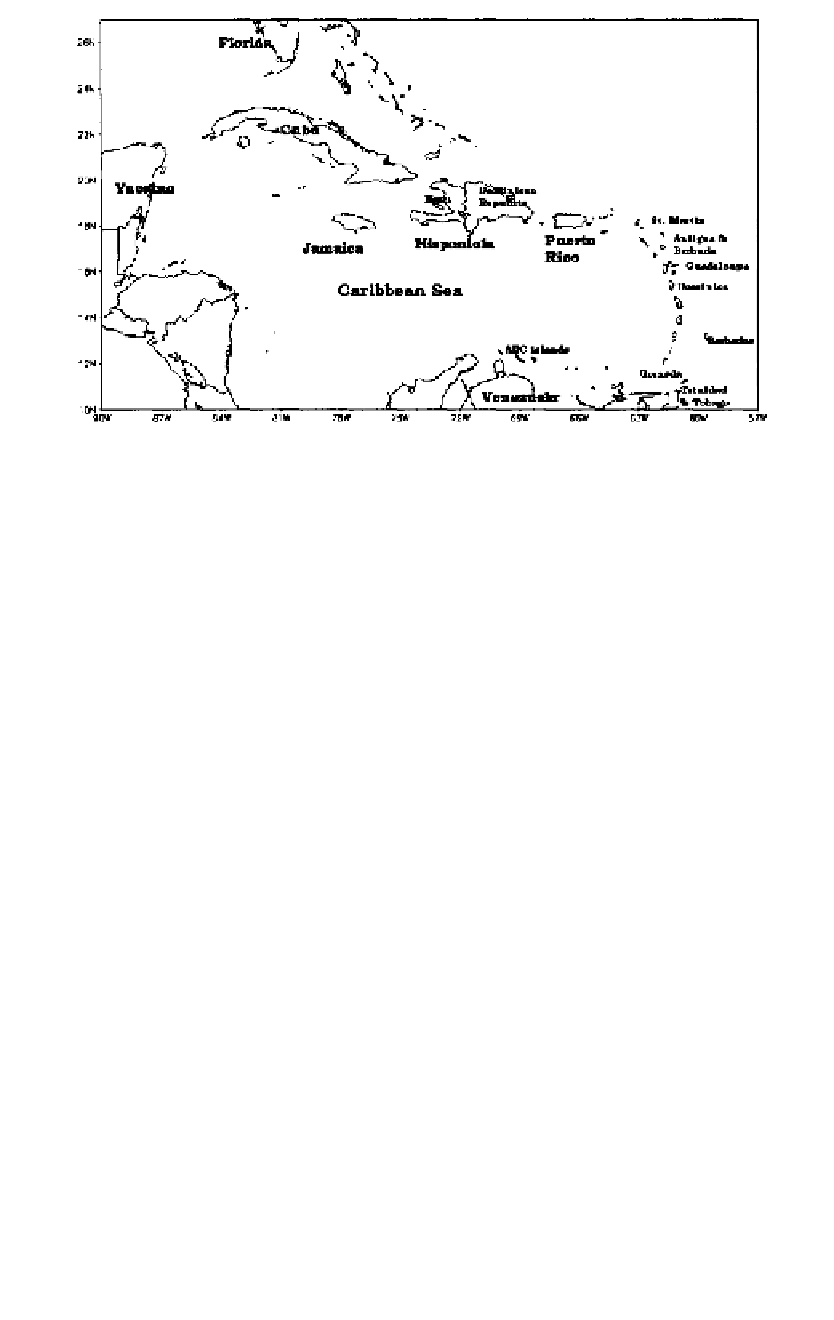Agriculture Reference
In-Depth Information
1
2
3
4
5
6
7
8
9
10
11
12
13
14
15
16
17
18
19
20
21
22
23
24
25
26
27
28
29
30
31
32
33
34
35
36
37
38
39
40
41
42
43
44
45
46
[145
Line
——
2.7
——
Norm
PgEn
Fig
ure 11.1
Map of the West Indies.
in
weakened trade winds. At the same time, the Caribbean Sea warms
up
. These weakened trades and warmer sea-surface temperatures favor the
co
nvective development of easterly waves (weak troughs of low pressure).
Th
e waves begin their regular (every 3-5 days) trek across the tropical
A
tlantic and through the region during mid-June. Later, the easterly waves
pr
oduce a summer with maximum rainfall and are largely responsible for
th
e tropical storms and hurricanes that frequent the region and augment
ra
infall totals during this period.
[145
C
ausative Factors of Drought
Drought, as defined in the West Indies, is most often related to disruptions
of the seasonal rainfall cycle. The primary phenomenon associated with
such seasonal disruptions is the El Niño/Southern Oscillation (ENSO). A
detailed description of ENSO is provided in chapter 3. Other factors, such
as the decadal fluctuations in Caribbean rainfall amounts, can also cause
drought (Taylor et al., 2002). We do not consider these other factors due
to the secondary role they play in producing interannual fluctuations in the
West Indian rainfall.
The ENSO phenomenon impacts West Indian rainfall both directly and
through a lag. When an El Niño event occurs, drier than normal conditions
characterize the West Indies during the later months of the rainfall season,
just before peak anomalies in the winter. Pacific sea-surface temperature
(Giannini et al., 2000; Taylor et al., 2002). Analysis of National Meteoro-
logical Office data for Jamaica reveals that since 1960, El Niño events were
the cause of many island-wide meteorological droughts in 1965, 1969,



































Search WWH ::

Custom Search